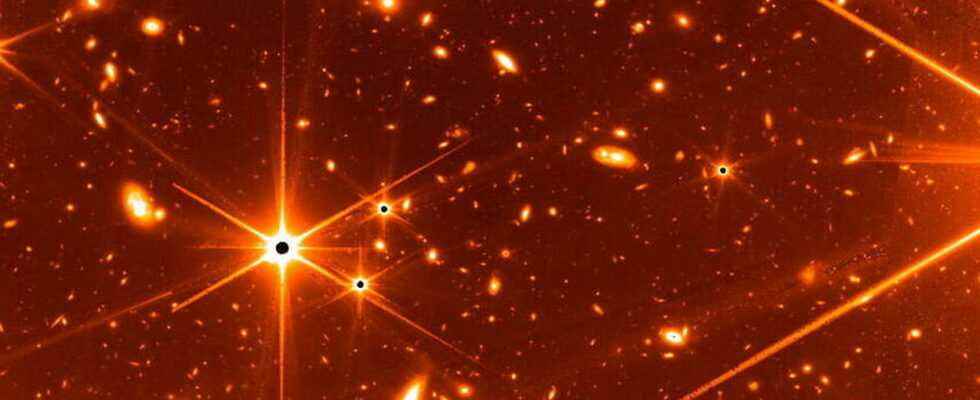MOn July 12, the American space agency NASA will unveil the long-awaited first scientific images from the James-Webb space telescope, accompanied by the first spectra, which are also highly coveted by scientists. Shots which the teams of this mission – with which the European Space Agency EA and its Canadian counterpart CSA/ASC are associated – have assured that they would cause a sensation! Those who still doubted it will probably be convinced by discovering this purely utilitarian image taken as part of the operation of the telescope’s precision pointing system, unveiled by NASA as a teaser.
This device called Fine Guidance Sensor (FGS) allows him to target cosmic objects of interest and focus on them. Even if his role is essential to the performance of the observatory, he initially had no scientific vocation to the point that the pictures he took were not even intended to be kept. Except that the breathtaking sharpness of this image – which NASA finally wanted to save – already makes it one of the deepest infrared views of the Universe ever obtained!
READ ALSOJames Webb: a revolutionary telescope
Although it was taken without color filters to study the age of galaxies with the rigor necessary for scientific analysis, this image acquired over a period of eight days in early May is still the result of 72 exposures over approximately 32 hours. In the foreground are stars, the brighter ones saturating the detectors which appear as black dots surrounded by six long, well-defined diffraction spikes (an effect related to the six-sided segments of Webb’s composite mirror) and, in background, a myriad of galaxies whose structure is remarkably noticeable. Moreover, some of them have a very low luminosity whereas the imager which captured them was not calibrated to see them. It is therefore a photograph of the cosmos full of promise.
READ ALSOThe fabulous promises of the James-Webb telescope
On Tuesday, the first official science images of Webb will be made available on this webpage where they will be presented simultaneously to the public, journalists and the scientific community.
